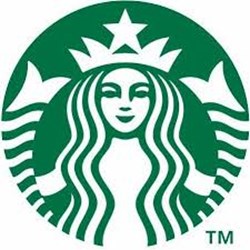Restaurant And Hospitality News – March 6, 2017

By Christine Kern, contributing writer

In news this week, Starbucks may be paying for its refugee hiring initiative in brand perception, while a new report digs into the foodservice industry’s labor force.
Did Starbucks’ Refugee Hiring Gamble Backfire?
In response to the outcry over President Trump’s travel ban, Starbucks announced in January that it plans to hire 10,000 refugees over the next five years across the 75 countries where it has stores. The move, however, did not have the results that it had hoped; instead, there were calls for boycotts from some conservative groups. And according to the YouGov BrandIndex report, the move may have been a costly one for Starbucks’ brand perception. In fact, as measured by YouGov BrandIndex’s Buzz Score, the chain dropped to its lowest perception level since last May, falling by two-thirds.
When consumers were asked two days before the announcement if they would consider buying Starbucks the next time they wanted coffee, 30 percent said yes, the highest level since last March; but now that percentage is just 24 percent, so the backlash against the hiring initiative is hitting the bottom line.
While the survey did not ask the 4,800 survey participants specifically about the refugee policy, it did ask whether they had heard anything about the brand, either positive or negative, feedback that is used to develop a “Buzz score” reflecting consumer perception.
New Report Reveals Foodservice Industry’s Labor Force Strengths and Weaknesses
The “Hourly Worker Survey” created by Snagajob and LinkedIn reviewed more than 120 million job applications from more than 20 million applicants using Snagajob, and also analyzed Snagajob’s full database and LinkedIn profile hourly job titles to shed some light on America’s workforce of some 78 million hourly workers. The results highlighted the strengths and weaknesses of the foodservice industry’s labor force.
The report found that telecomm, grocery stores, and casual dining are able to hold on to their employees the longest, while pizza, fast food, sandwiches, fast casual, and beverage shops fall further down the line. Interestingly enough, it also found that beverage stores promote the fastest, at 1.7 years to management. Fast casual, sandwich, and pizza stores ranked at 2.1, while fast food was 2.3 and casual dining was near the bottom at 3.0.
The hourly workforce is, not surprisingly, overwhelmingly young, with 71 percent under the age of 30, and most have no degree or a high school degree. However, 45 percent of hourly workers over 30 have some college education, including advanced degrees.
The study found that hourly workers look at three aspects when applying for jobs, and employers need to be aware: hiring speed, employee engagement, and the number of job applications. Sandwich shops lead the pack when it comes to how quickly applications are hired, at 17 days from application date to hire date. On average, restaurants hire within 27 days compared to 33 days in retail.
Employee engagement also matters, however; applicants look at how long employees stay at their jobs. Casual dining had the longest engagement of employees, while beverages and fast food employers have the lowest. And while hourly jobs are mostly entry-level, restaurants offer more growth opportunities than retail, and the restaurant industry has a greater proportion of managerial roles. This is logical, given that 90 percent of restaurants have fewer than 50 employees.
